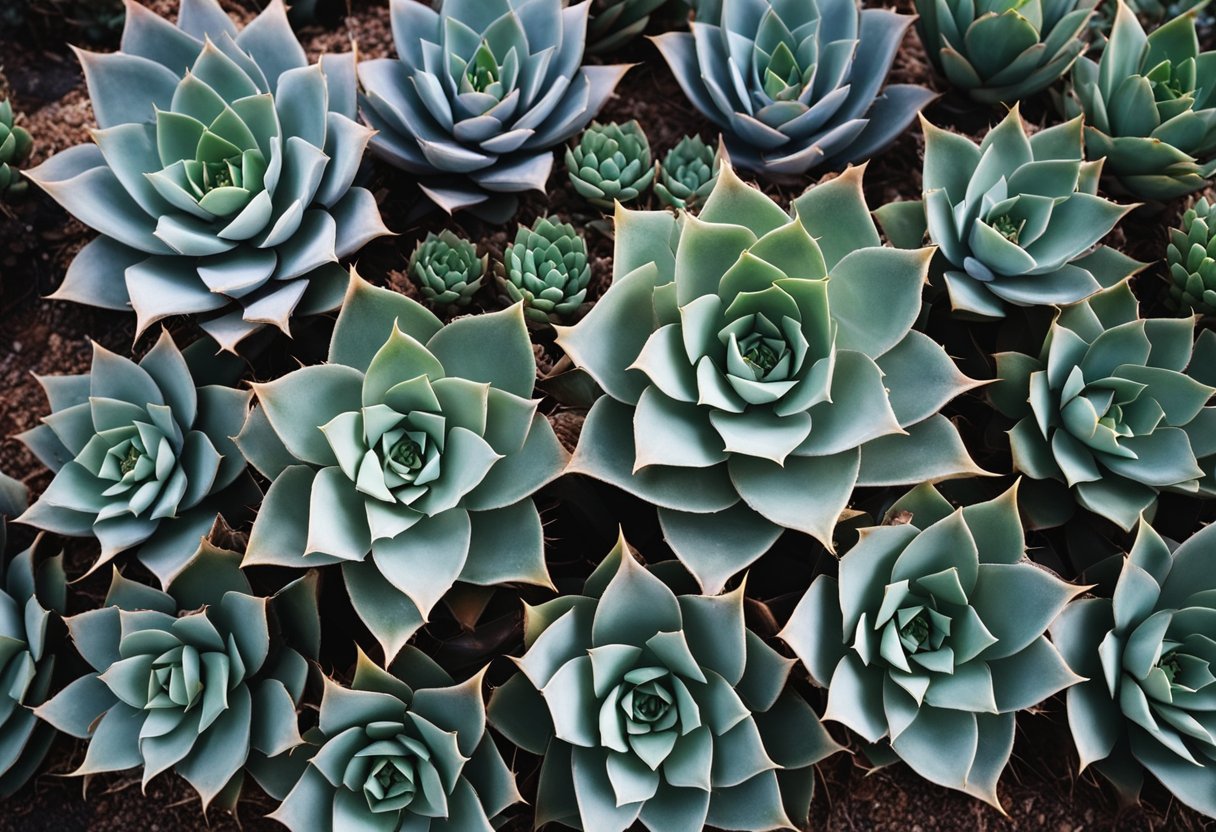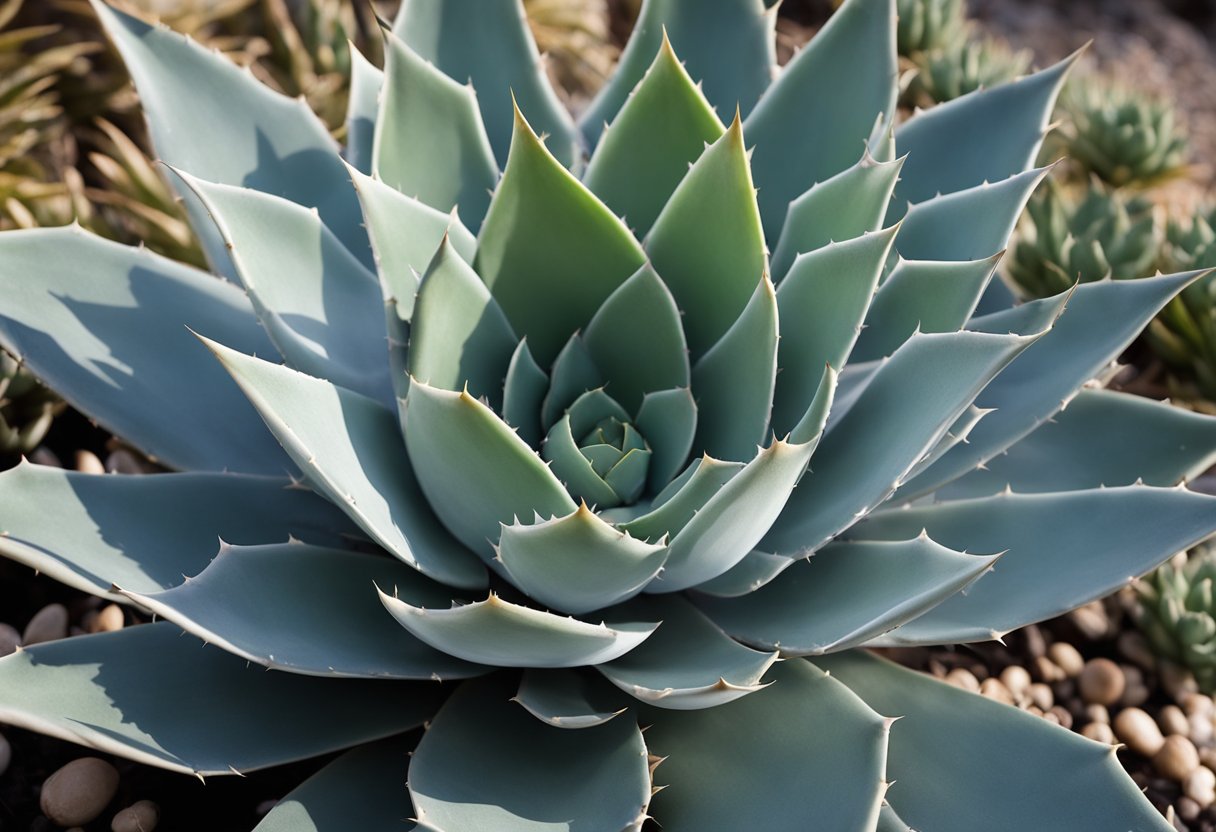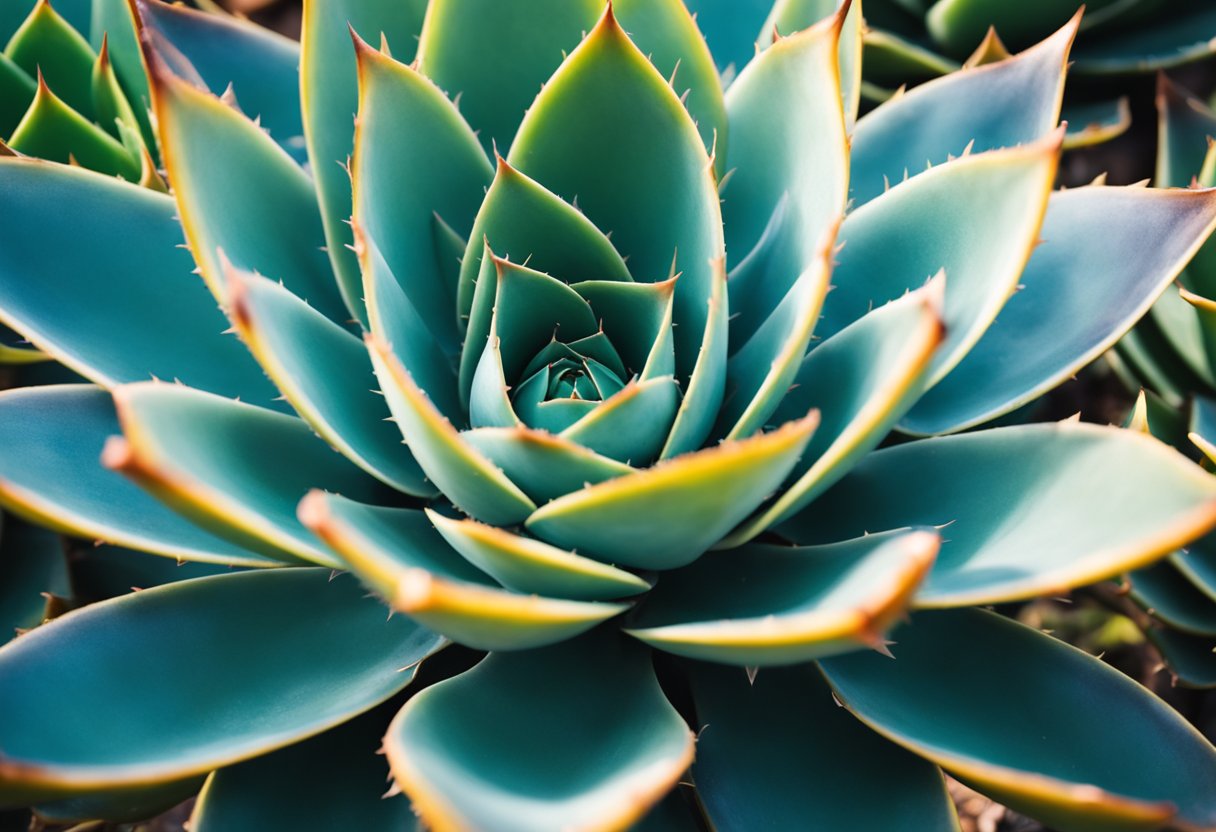Agave Succulent Types: A Comprehensive Guide
Agave succulents are a popular choice for gardeners and plant enthusiasts due to their unique shapes, sizes, and colors. These plants are native to hot and dry regions of the Americas, and they have adapted to survive in harsh environments. Agave plants are known for their thick, fleshy leaves that store water, making them drought-tolerant and low-maintenance.
This post may contain affiliate links, which means I’ll receive a commission if you purchase through my link, at no extra cost to you. Please read full disclosure here.

There are over 200 species of agave plants, and each one has its unique characteristics. Some agave succulents are small and compact, while others can grow up to 30 feet tall. The leaves of agave plants can be smooth or spiky, and they come in a wide range of colors, including blue, green, gray, and variegated. Some agave plants produce beautiful flowers that attract pollinators, while others are monocarpic, meaning they only flower once in their lifetime. Understanding the different types of agave succulents can help you choose the right plant for your garden or indoor space.
Understanding Agave Succulents

Agave plants are a type of succulent that are native to the hot and arid regions of the Americas. These plants are well-known for their fleshy leaves that grow in a rosette pattern, with sharp spines along the edges. Agave succulents come in a wide range of shapes, sizes, and colors, making them a popular choice among gardeners and plant enthusiasts.
One of the most distinctive features of agave succulents is their ability to store water in their leaves. This allows them to survive in dry and harsh environments where other plants may struggle to thrive. Agave plants are also known for their long lifespans, with some species living up to 30 years or more.
There are over 200 species of agave plants, each with its own unique characteristics and growing requirements. Some of the most popular types of agave succulents include the Blue Agave, Century Plant, and Queen Victoria Agave. These plants are often used for landscaping purposes, as well as for producing various alcoholic beverages like tequila and mezcal.
When it comes to caring for agave succulents, there are a few important factors to keep in mind. These plants require well-draining soil and plenty of sunlight, as they are adapted to hot and dry conditions. Overwatering can be a problem for agave plants, so it’s important to let the soil dry out completely between waterings.
Overall, agave succulents are a fascinating and versatile group of plants that can add beauty and interest to any garden or indoor space. With their unique shapes and sizes, as well as their hardy nature, these plants are a great choice for both novice and experienced gardeners alike.
Basic Characteristics of Agave

Agave is a genus of succulent plants that belongs to the Asparagaceae family. They are known for their long, fleshy leaves that grow in a rosette shape and their unique flowering pattern. Here are some basic characteristics of agave:
Leaf Structure
Agave leaves are long and thick, with sharp spines along the edges. They grow in a rosette shape, with the leaves radiating out from a central point. Some varieties have smooth edges, while others have serrated edges.
Size and Shape
Agave plants vary in size and shape, depending on the species. Some are small and compact, while others can grow up to 10 feet tall and wide. Most agave plants have a rosette shape, with the leaves growing in a circular pattern.
Color and Texture
Agave leaves come in a range of colors, from green to blue to variegated. The texture of the leaves can be smooth or rough, depending on the species.
Flowering Pattern
Agave plants are monocarpic, meaning they flower only once in their lifetime before dying. The flowering pattern varies depending on the species, but generally, a tall flower stalk emerges from the center of the rosette and produces clusters of flowers.
Uniqueness of Agave
Agave plants are unique in their ability to store water in their leaves, making them highly drought-tolerant. They are also known for their sharp spines and striking foliage.
Species of Agave
There are over 200 species of agave, with a wide range of sizes, shapes, and colors. Some of the most popular species include Agave americana (also known as the century plant), blue agave (Agave tequilana), foxtail agave (Agave attenuata), and queen victoria agave (Agave victoriae-reginae).
Agave Cultivation
Agave plants prefer well-draining soil and full sun exposure. They are native to the hot, dry climates of Mexico and the southwestern United States, and are well-suited to similar climates. They can be grown in containers or in the ground, and are popular as indoor plants.
Propagation of Agave
Agave plants can be propagated through offsets, or “pups,” that grow from the base of the parent plant. They can also be grown from seed, although this method is less common.
Care and Maintenance of Agave
Agave plants are low-maintenance and require little watering or fertilizing. They are generally pest-resistant, although they can be susceptible to root rot and the agave snout weevil. Regular pruning of dead or damaged leaves can help keep the plant healthy.
Agave and Pests
Agave plants are generally resistant to pests and diseases, but they can be susceptible to root rot and the agave snout weevil. Regular inspection and maintenance can help prevent these issues.
Agave in Human Culture
Agave plants have been used for centuries by indigenous peoples in the Americas and the Caribbean for their fiber, sap, and medicinal properties. They are also the source of tequila and other alcoholic beverages. In modern times, agave plants are popular as ornamental plants for their dramatic foliage and low-maintenance requirements.